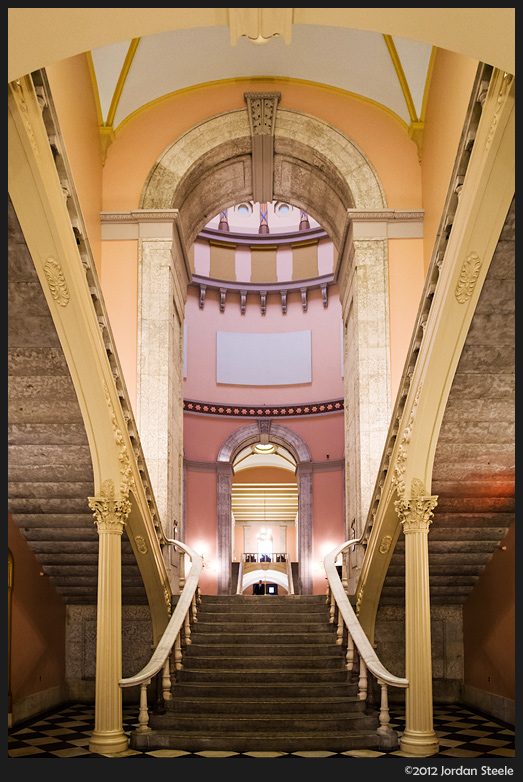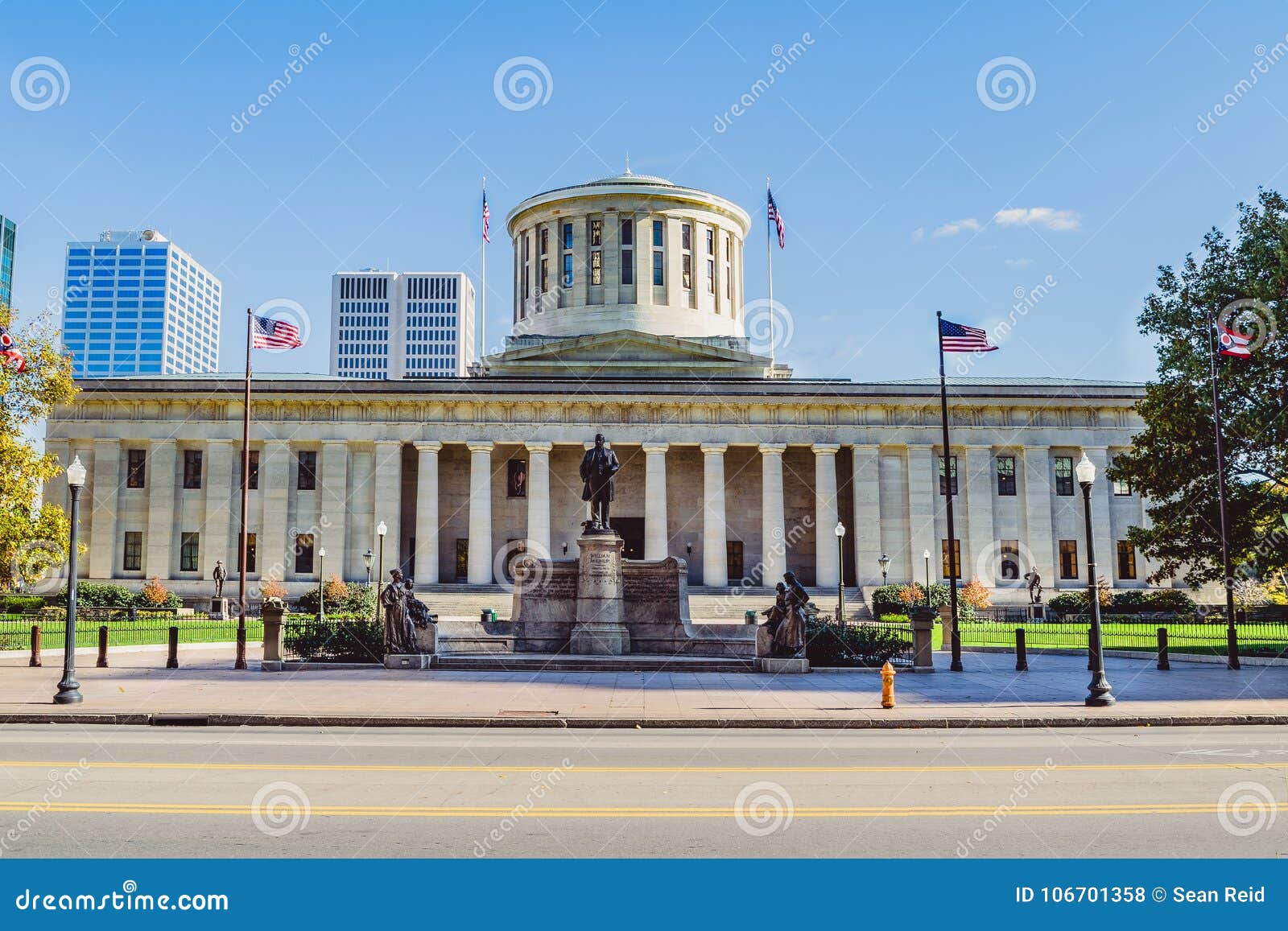Table Of Content

Fire consumed the old two-story capitol building in 1852, which created a new urgency to complete the Statehouse project as government offices were forced to relocate to various buildings around Columbus. While some suspected arson, the exact cause of the fire remains a mystery to this day. With the Statehouse exterior nearing completion by 1854, Columbus architect Nathan Kelley was hired to supervise the design and construction of the building's interiors. One of his major tasks would be to provide a system for heating and ventilation in the building, which had not been considered previously.
The Ohio Statehouse is located at:
A review of political milestones in the Ohio statehouse in 2023 - NBC4 WCMH-TV
A review of political milestones in the Ohio statehouse in 2023.
Posted: Thu, 28 Dec 2023 08:00:00 GMT [source]
During calendar years 2007 and 2008 approximately 70,000 visitors participated with organized tours of the building each of the years. In 1901, facing significant crowding several changes were considered including a completely new statehouse designed to more closely resemble the national Capitol building in Washington. Cost prohibitive, it was decided that the Ohio Supreme Court would move to a separate building on the east side of Capitol Square, and to give the court the prestige of its own building. The new building, named the Judiciary Annex, was constructed of the same Columbus limestone as the Statehouse. Neoclassical on the exterior, the interior spaces, especially the grand central staircase are Beaux Arts in style. The building was the work of Cincinnati architect Samuel Hannaford, and was completed in two years at the cost of $375,000.
Ohio State coach Ryan Day, other coaches on 2024 …
The rotunda floor features octagonal contrasting stone blocks—over 4,000 of them—laid in an intricate spiral geometric pattern; from it large, arched openings led to the main corridors. The house and senate chambers featured coffered ceilings with decorative plaster and colored glass skylights, white marble podium columns, and additional architectural detail. A Statehouse field trip gives educators the opportunity to bring lesson plans to life on subjects including history, government, civics, art and architecture. The Ohio Statehouse Museum Education Center provides guided tours for school groups in grades fourth and up. Due to the nature of the space as a working government building and the complexity of the material covered on tour, guided tours cannot be booked for students younger than fourth grade. However, teachers and chaperones are welcome to bring younger students to the Statehouse and lead a self-guided tour.
Protesters clash at Ohio Statehouse on third anniversary of U.S. Capitol demonstration - ABC6OnYourSide.com
Protesters clash at Ohio Statehouse on third anniversary of U.S. Capitol demonstration.
Posted: Sat, 06 Jan 2024 08:00:00 GMT [source]
Local leaders react to pro-Palestine protest on Ohio …
There have been no defaults, and to date, OMAP has generated more than $5.6 million in estimated savings for local governments. COLUMBUS, Ohio — More than two dozen people were arrested Thursday night on the Ohio State University main campus as pro-Palestinian protesters called for the school to divest from Israel. Caleb Atwater, Samuel Lewis and Calvin Stowe were behind common schools in Ohio. The 1851 Ohio Constitution guarantees there will be state funding for public education for Ohioans. When students bring their own lunches, the group may eat outside on the grounds of Capitol Square or inside.
The Ohio Statehouse Museum features Ohio’s Constitutions in the central exhibit area where pages of the historic documents are on display. Visitors may view handwritten pages from the 1802 and the 1851 Constitutions. Ohio Statehouse Museum Education Center offers exhibits that encourage visitors to participate in the state government process by making decisions, expressing their opinions, comparing viewpoints and by voting.
As more offices and work rooms were required, large spaces would be subdivided into smaller areas. The most prominent example was the conversion to offices of the four open courts that occupied areas on the interior of the building. These open areas were from top to bottom of the structure and were intended to admit light and fresh air to the inner reaches of the building. The advent of electric lighting coupled with the need for space meant that levels of offices would come to occupy these large open areas. The fifty-four rooms the building originally held increased to 317 rooms by 1989.
Drelyse African Restaurant, Columbus
Thirteen Democrats voted against the bill, including Rep. Juanita O. Brent (D-Cleveland), who testified War on Drugs-style policies give her pause. Rep. Cecil Thomas (D-Cincinnati) said he shared similar reservations at first, but sat through committee testimony on the bill and changed his tune. The bill would require public schools to create an internet safety policy. The legislation also mandates grades 6-12 to have courses on the negative side of social media. Ohio senators have passed a bill to limit cell phone use in schools, but it allows local districts to decide on the best practices for their students.
PUBLIC TOURS
COLUMBUS, Ohio – A broad, bipartisan majority of the Ohio House passed legislation Wednesday to ratchet up penalties for those who knowingly sell or unknowingly possess drugs laced with fentanyl. Still, 37 “no” votes, while a break from Washington’s ironclad support for the Jewish state, fell short of the opposition bloc progressives had hoped to muster. Thirty-nine Democrats had voted “no” on Friday on the rule to allow the foreign aid package to come to the House floor, a target that progressives just missed on Saturday on the Israel bill.
Grounds
Hudson River artist Thomas Cole came in third and, even though his design was not selected, elements of his plan made it into the final scheme and were incorporated into the building. Indeed, Cole’s painting, The Architect’s Dream, has components that look very much like the Ohio Statehouse. Construction of the building, which was accomplished in part by penitentiary labor and with the local and highly fossiliferous Columbus limestone, began in 1839 and followed a rocky course strewn with political conflict.
Like Strickland, current governor Mike DeWine uses the Statehouse office on a regular basis, although his staff remains based in the Riffe Center. As the state government grew in size office space became a problem; over time the state moved offices to four different locations in Columbus. Various schemes to enlarge the Statehouse were floated over the years, but none went forward.
This freely available resource empowers the public with authoritative knowledge that deepens their understanding and appreciation of the built environment. Located in downtown Columbus, visitors are encouraged to enter the Statehouse through the Third Street entrance as guided tours depart from the Map Room. If you're taking a self-guided tour, start at the Map Room to pick up a Self-Guided Tour and Cell Phone Audio Tour Brochure. Each state’s capitol building is a unique symbol of democracy and a gathering place for important events in history. Ohio’s capitol building, known as the Ohio Statehouse, is as significant as any. While there are older buildings that serve a similar function, most of those were originally colonial assembly buildings.
The Capitol Square complex includes the Ohio Statehouse, Senate Building and Atrium. The buildings are not only working government offices, but also a magnificent monument to the people and the period during which Ohio’s democracy was founded and formed. The buildings are not only working government offices but a magnificent monument to the people and the period during which Ohio's democracy was founded and formed. The staff of the Ohio Statehouse Museum Education Center is assisted by more than 90 volunteers.

Cole's nephew, William Henry Bayless, a Steubenville native, was apprenticed in the office of Alexander Jackson Davis. Lou Tobin, executive director of the Ohio Prosecuting Attorneys Association, said Ohio’s drug trafficking laws are weak when compared with surrounding states. They also know they can add fentanyl to their products to make it more addictive, and exploit how hard it can be for prosecutors to prove that they knew their drugs were cut with fentanyl. A punitive approach to drug policy doesn’t reduce drug use, said Dr. Michael Brumage, a physician with years of experience in systems-level public health. Criminalization policies, while usually well-intended, will just send people to darker corners to seek more concealable substances, rather than addressing underlying problems of substance use disorders.
By comparison, the Statehouse itself took 22 years from start to finish and cost approximately $1.3 million. The difference in cost and time to completion indicates differences in how the buildings were constructed. The Statehouse is more akin to a castle or cathedral, with thick load-bearing walls of stone.
The inside area to eat lunches is near the Map Room in the hallway with green benches. One of the most notable tour programs available at the Ohio Statehouse was named "The Portals of History", which used the building as a stage to introduce characters from the state's history. As a tour group made their way through the building, they encountered living history presenters portraying notable individuals from the past. It also holds a memorial sign on one of its pillars showing the exact location that Abraham Lincoln, prior to his run for president, stood to give a speech on the building's steps. The Fraternal Order of Police and the Buckeye Sheriff’s Association testified in support of the bill as well.













